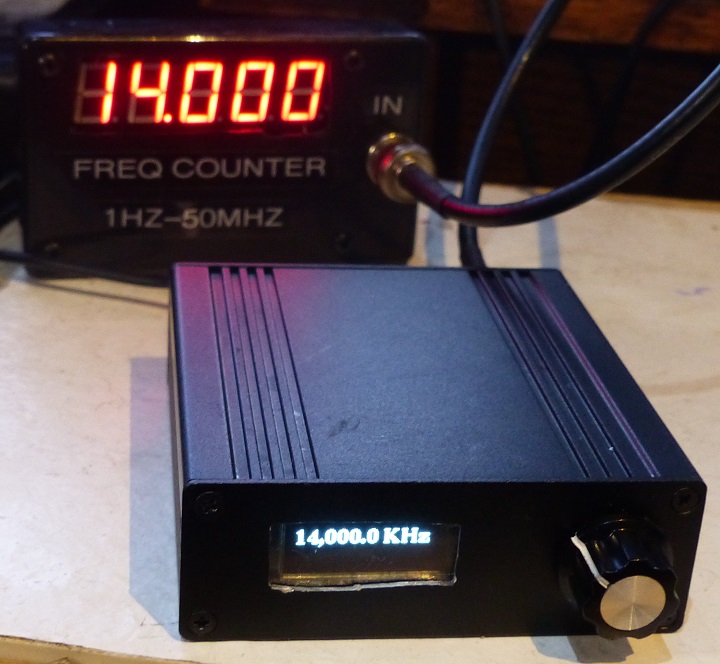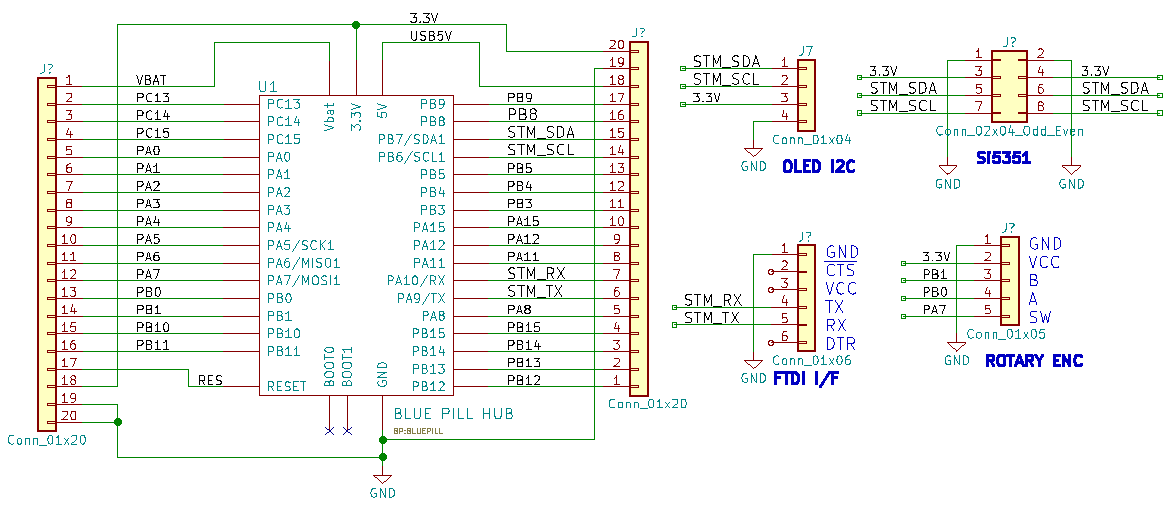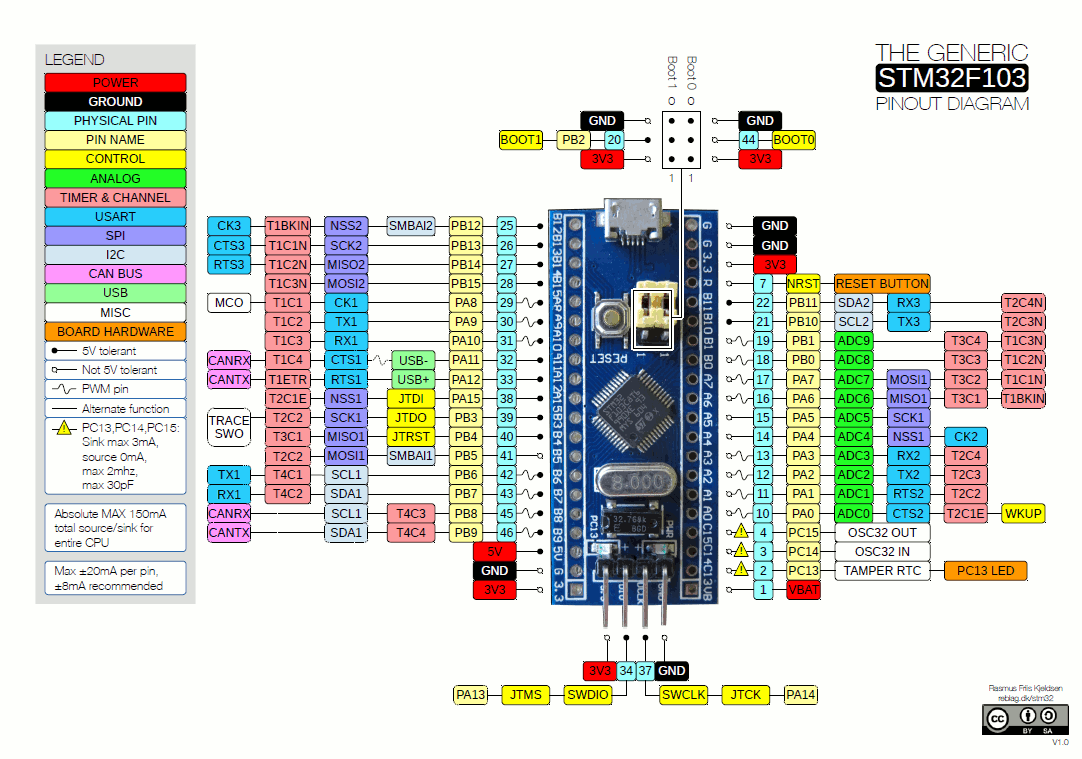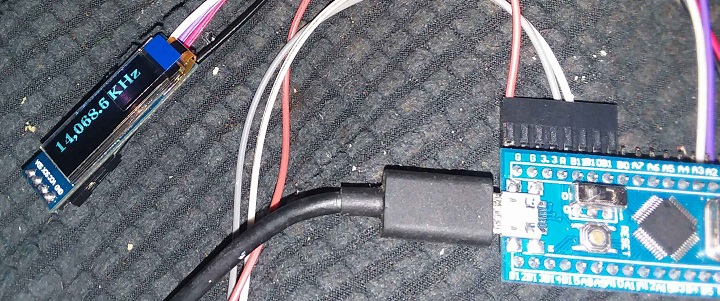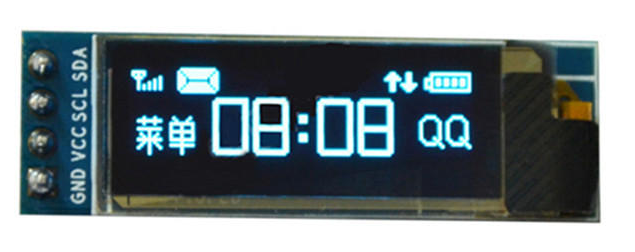Difference between revisions of "VFO-001"
Jump to navigation
Jump to search
Blwikiadmin (talk | contribs) |
Blwikiadmin (talk | contribs) |
||
| Line 15: | Line 15: | ||
** 3 Outputs | ** 3 Outputs | ||
** 27 MHz crystal | ** 27 MHz crystal | ||
| + | * 3.3V operation works without level shifters for I2C | ||
| + | ** OLED runs from 3.3V | ||
| + | ** Si5351 can only run from 3.3V | ||
| + | * Used right angle headers and Dupont cables for low profile | ||
| + | * Replaced BOOT 0,1 jumpers | ||
| + | ** Wire jumper on BOOT1 | ||
| + | ** Switch on BOOT0 - easier to download code | ||
| + | * Download via serial | ||
| + | * Programmed via Arduino IDE | ||
| + | |||
* [https://www.adafruit.com/product/2230 Extruded Aluminum Enclosure Box - 94mm x 83mm x 30mm] | * [https://www.adafruit.com/product/2230 Extruded Aluminum Enclosure Box - 94mm x 83mm x 30mm] | ||
Revision as of 12:47, 30 October 2020
Contents
Features
- DD1306 OLED Display
- I2C Interface
- Rotary Encoder Break Out Board
- STM32 (Blue Pill Board) Microprocessor
- Arduino compatible
- 3.3V
- Si5351 Oscillator Breakout Board
- 10 KHz - 40 MHz tuning range
- 100Hz/1KHz/10KHz/100KHz/1MHz/10MHz steps
- I2C Interface
- 3 Outputs
- 27 MHz crystal
- 3.3V operation works without level shifters for I2C
- OLED runs from 3.3V
- Si5351 can only run from 3.3V
- Used right angle headers and Dupont cables for low profile
- Replaced BOOT 0,1 jumpers
- Wire jumper on BOOT1
- Switch on BOOT0 - easier to download code
- Download via serial
- Programmed via Arduino IDE
Schematic
Parts
Blue Pill Card
128x32 OLED
Libraries/Example Code
Land Boards Code
Libraries used in this app
- U8g2: Library for monochrome displays, version 2
- Si5351 Library for Arduino
- Rotary Encoder - Software debounced
Arduino Library for OLED
U8G2_SSD1306_128X32_UNIVISION_F_HW_I2C u8g2(U8G2_R0, /* reset=*/ U8X8_PIN_NONE); // STM32, Ebay OLED
u8g2.setFont(u8g2_font_ncenB14_tr);
Hello World Code
U8G2_SSD1306_128X32_UNIVISION_F_HW_I2C u8g2(U8G2_R0, /* reset=*/ U8X8_PIN_NONE); // STM32, Ebay OLED
void setup(void) {
u8g2.begin();
}
void loop(void) {
u8g2.clearBuffer(); // clear the internal memory
u8g2.setFont(u8g2_font_ncenB08_tr); // choose a suitable font
u8g2.drawStr(0,10,"Hello World!"); // write something to the internal memory
u8g2.sendBuffer(); // transfer internal memory to the display
delay(1000);
}
Others
- Universal Digital VFO Si570/Si5351
- Adafruit_Si5351
- Si5351 Library for avr-gcc
- vk3hn_VFO_controller
- Simple BFO with si5351 controlled by Arduino
- VFO and BFO with Si5351A, OLED and Arduino
Videos
